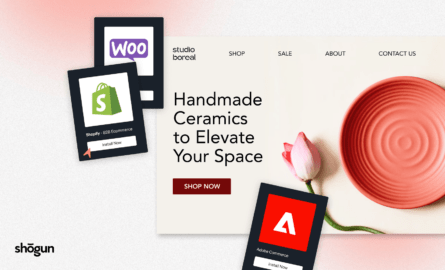The Best Headless Commerce Platforms: Our Top Picks
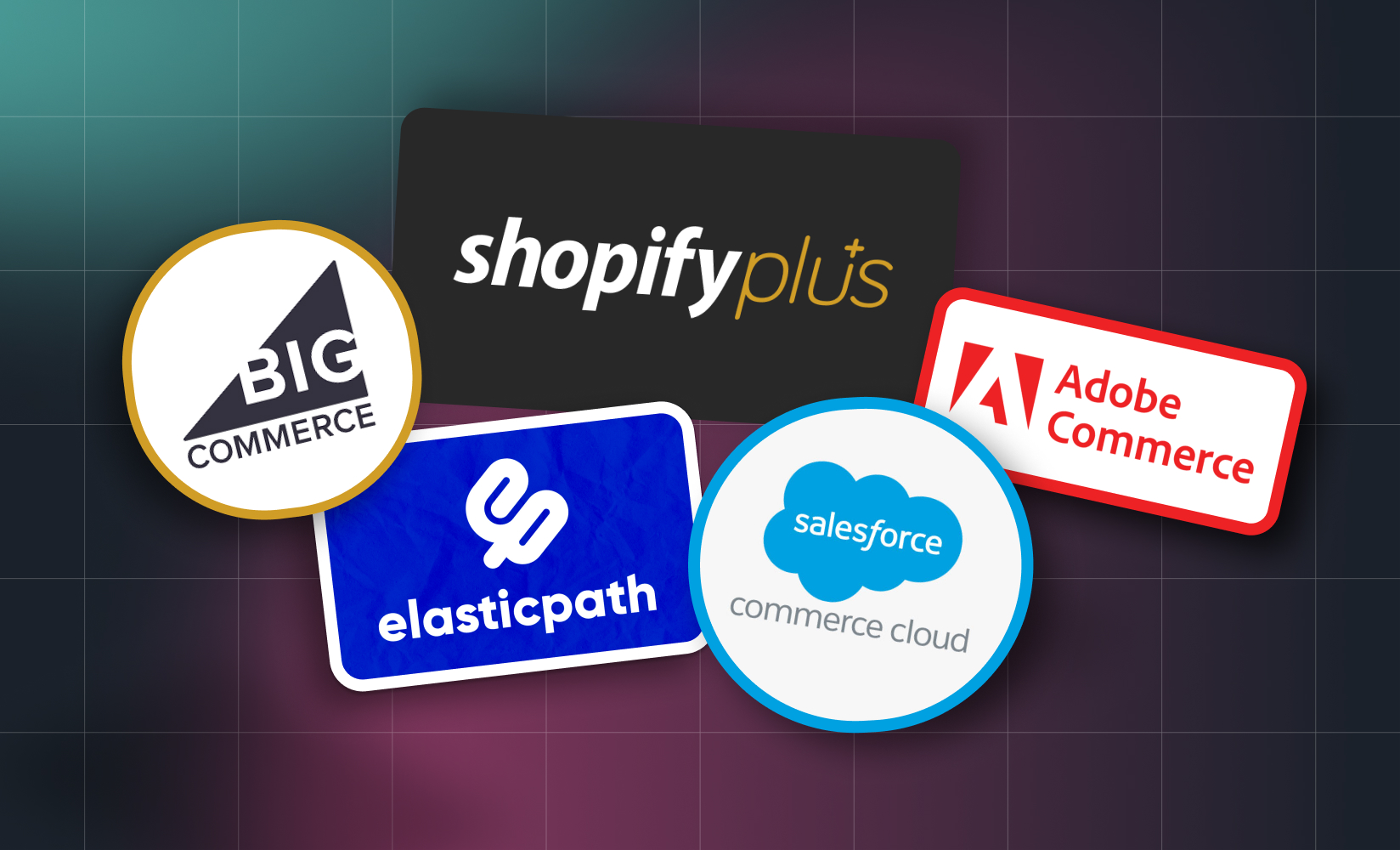
If you’re scaling an ecommerce business, you’ve likely heard about the benefits of headless commerce. And if you’ve built your success using a classic backend commerce platform like Shopify, BigCommerce, or Magento (now Adobe Commerce), you might be wondering if it’s time to go headless or if it could be worth the effort for the flexibility.Maybe you’re just starting to explore the best headless commerce platforms, or perhaps you’re evaluating the total cost of ownership to finally get the fully customized ecommerce site you need.
No matter where you are in the journey, in this post, we’ll take a look at how traditional commerce platforms are transforming into headless solutions and how to take your store headless without the technical complexity and proliferation of software it’s often associated with.
Below, we’ll cover:
- What is headless commerce?
- What is a headless commerce platform?
- Which ecommerce platforms are headless enabled?
- The benefits of a headless ecommerce platform
- The best headless ecommerce platforms
- Select a frontend platform for once you’re headless
What is headless commerce?
In a nutshell, headless commerce refers to separating the frontend presentation layer of your ecommerce store from the tech you use for the backend commerce functions. Wherein you use separate technology for each.
As an example, you could use Shopify Plus for your ecommerce back-office needs (compliance, inventory, checkout, etc.), and use a different “head” or frontend presentation layer to gain total control over how the site looks and performs.
Today, we’re taking a closer look at the backend side of things, and we’ll assume you’re familiar with the overall concept.
If you need an in-depth primer, check out our comprehensive guide to headless commerce.
So, what is a headless commerce platform?
A headless commerce platform is a commerce platform where the frontend presentation layer has been ‘decoupled’ or is able to become separate.
The ‘head’ has been removed from the ecommerce platform ‘body.’
But why would you want to do this? What are the advantages?
To answer, we need to look at how ecommerce has evolved.
Traditional commerce platforms are software offering ecommerce services and functionality to online retailers. These platforms started out as complete, ‘monolithic’ solutions for online retail.
That is—if you wanted to sell products online, you’d select a commerce platform provider to give you everything you needed to do it out of the box. One platform provided everything from the frontend layer your shoppers land on to the payment processing and PCI compliance when they check out.
Today, this model’s called monolithic commerce, and while it makes sense for some retailers, the way ecommerce has changed in the last decade has meant scaling merchants often need more flexibility and choose to decouple or ‘go headless.’
Today, competitive online-first brands need to be able to create:
- Rich customer experiences
- A friction-free customer journey
- A consistent omnichannel experience
- Fast-loading ecommerce websites/stores
And you need to deliver all of this while working across channels and devices. This in turn means working with different programming languages and frameworks while still providing fast, immersive, and consistent customer experiences. It’s a tall order.
And it’s a limitation for monolithic commerce platforms.
The way monolithic platforms are architected—with the customer-facing parts connected with the back-office commerce functions (i.e., the two sides are entirely reliant)—has two major drawbacks:
- It’s very hard to integrate new or different software systems: As the whole package follows the same programming logic, introducing outside technology is a major challenge. The code that governs the backend also governs the frontend, so making changes (connecting your commerce platform to a new mobile site or app, for example), requires substantial code and development work.
- Monolithic sites are often slow loading: Requests that visitors make when on your site have to be routed through the backend before they can serve a response. This adds latency and can be a real drag on your store’s performance. Many traditional commerce platforms aren’t ideal for speed or load-time, despite manual fixes you can try.
Because omnichannel and a desire for instant access are table stakes customer expectations, these can become fatal flaws.
But all the great stuff that commerce platforms provide—the cart, menu systems, merchandising capabilities, etc. are still there. So to get around the challenges of the front and backend being fused together, many vendors have made their ecommerce platforms headless enabled.
These classic platforms have now given you the option of separating the fronted ‘head’ from the backend ‘body’, using API calls to reconnect them. You can still use all the tools they offer, but you don’t have to use their frontend capabilities.
As we’ll get into later, this gives you much greater control over your frontend operation. Once decoupled, a whole new world of frontend possibilities opens up, and you’re not tied into the backend platform’s inbuilt frontend.
There are several benefits to doing this, most importantly, you can use a headless enabled backend in combination with a separate, flexible frontend layer to:
- Deliver the precise, rich experience you design/envision
- Boost your ecommerce site speed,
- Gain omnichannel capabilities more easily, and
- Get improved integration capabilities.
#cta-visual-fe#<cta-title>The backend you have—now with a frontend you’ll love<cta-title>See how Shogun Frontend helps you take a radically different approach to headless commerce.Learn more
Which top ecommerce platforms are headless enabled?
There are several headless-enabled backends, including the market leaders. If you’re on one of them you won’t have to replatform, you can simply switch your content delivery solution to a separate frontend layer once that’s provisioned/ready, and keep all the backend services running—minimizing disruption.
The top headless commerce platforms are:
- Shopify / Shopify Plus
- BigCommerce
- Magento / Adobe Commerce
- Salesforce Commerce Cloud (SFCC)
- Elastic Path
But there are other backend platforms that you can go headless with, including:
- Spryker
- OroCommerce
- Kibo Commerce
What is an enterprise-level ecommerce platform?
You might have heard the term enterprise-grade or enterprise-level commerce platform. It’s often used to differentiate between the functionality needed for small to medium-sized online businesses and what’s appropriate for larger brands with more complex, larger-scale needs.
There is no hard and fast set of attributes that define an enterprise commerce platform, except for the ability to deliver fast and efficient ecommerce services at scale.
Generally, an enterprise-level commerce platform will have the following criteria:
- Integration with Enterprise Resource Planning (ERP) systems – Or even have inbuilt ERP capabilities. Big retailers need to be able to access areas like accounting and order management quickly. They need to be able to see a live view of the state of their business all in one place. Being able to do this from within a commerce platform saves a huge amount of time and reduces the risk of reputation-damaging issues like running out of stock.
- Multi-site management – If you want to run several sites at once, doing it from one place not only saves you time and resources but also ensures brand consistency across, for example, different international locales of your site. If your backend also has order management and resource planning capabilities, you can manage your stock across different sites.
- Advanced analytics– As an online brand of any size, you likely use analytics software independent of your commerce platform. But the backend platform—with its multiple support services—is closest to the raw data about customers and can provide a wealth of insights into how shoppers behave. A good enterprise-level backend package will provide tools capable of interpreting this data.
- Customer segmentation and testing – Data by itself isn’t much use if you don’t get insights from it. An enterprise commerce platform should be able to segment customers by categories such as new/return customer, location, how they’ve reached your site, etc., and then be able to make smart choices as to what messaging to display to increase conversions.
The benefits of a headless ecommerce platform
As we covered, taking your commerce platform headless gives you more flexibility for making customizations and adding integrations and boosts your speed.
But there are several other benefits of going headless:
- Frontend freedom/control – This is one of the main reasons for going headless in the first place. You don’t need to be tied into the frontend that comes as standard from your ecommerce platform vendor. Adding a headless frontend layer to your tech stack will give you expanded options for creating exceptional websites with rich content and lightning-fast load times.
- Omnichannel freedom – When the variety of channels you integrate into your commerce platform isn’t limited by the operating requirements of the backend commerce platform, you can provide a much fuller omnichannel experience to your customers.
- Unique customer experiences – Headless gives you the ability to fashion unique customer experiences regardless of channel or device. Your teams can craft experiences from within a frontend environment and deliver them across channels – without the loss of speed or performance. Your backend will be able to support these customers, process payments, and organize catalogs, while your frontend dazzles them with advanced customer experiences.
- A low to no-code environment – Because changes that you make to your content are no longer dependent on coding changes in your backend system, often your marketing and business teams can operate in a code-free setting depending on the vendor you use to go headless and the Experience Manager used to update content. Changes to text, images, and even whole web pages can be made without dependence on backend requirements.
- Higher lifetime value/lower acquisition costs – With an exceptional customer experience you craft with the frontend design capabilities, it’s much easier to attract and keep customers organically. Meaning less spend on advertising and increased brand loyalty.
The 5 best headless ecommerce platforms
Hopefully, we’ve shed a bit of light on what makes a backend headless ecommerce platform tick, so now let’s get into the best the market has to offer—or the top headless commerce platforms out there—and their strengths and weaknesses.
In no particular order:
Shopify Plus
Shopify is the most recognizable commerce platform around, with millions of sites, from mom-and-pop stores to global brands like Netflix, using their services.
And with Shopify’s Storefront API, you can take your Shopify store headless.
Pros:
- Shopify is a huge platform – One of the best enterprise ecommerce platforms out there! Which means there’s lots of support available for taking your store headless. Lots of brands have made this journey before you, so there’s a wealth of experience and expertise to draw on.
- Great documentation – Shopify has extensive API documentation, making the path to headless easier.
- You can use a different CMS – Shopify is a great backend platform, but their inbuilt CMS may struggle to meet the demands of your content as you scale your brand. Going headless allows you to take a more composable approach to content management, either with a third-party headless CMS or by crafting experiences within a frontend-as-a-Service (FEaaS) layer.
Cons:
- Some click-to-install, or third-party apps will stop working – Shopify provides a huge number of apps as part of its offering. When you make the transition to headless, some of these won’t work and you’ll initially lose some functionality. It’s usually possible to reintegrate or find workarounds, but this can take time. There’s a lot you can do with an implementation partner to ensure integrations management for performance as you decouple.
- Shopify is not API-first – Because Shopify started as an all-around commerce package, and still focuses on this aspect of their offering to a large extent, it’s not as straightforward to take Shopify headless as with some other, newer platforms. This is only really a problem if you’re going for a Jamstack build, though. If you’re using a unified frontend platform to go headless with Shopify, these platforms have done the infrastructure groundwork for you.
Shopify headless commerce examples:
Stikwood
This online home decor brand relies on their website to create a digital shopping experience to rival real-world DIY stores.
Their headless build, with an all-in-one frontend layer provided by Shogun, allowed them to add augmented reality and other interactive tools and incorporate them into a visually stunning online DIY hub.
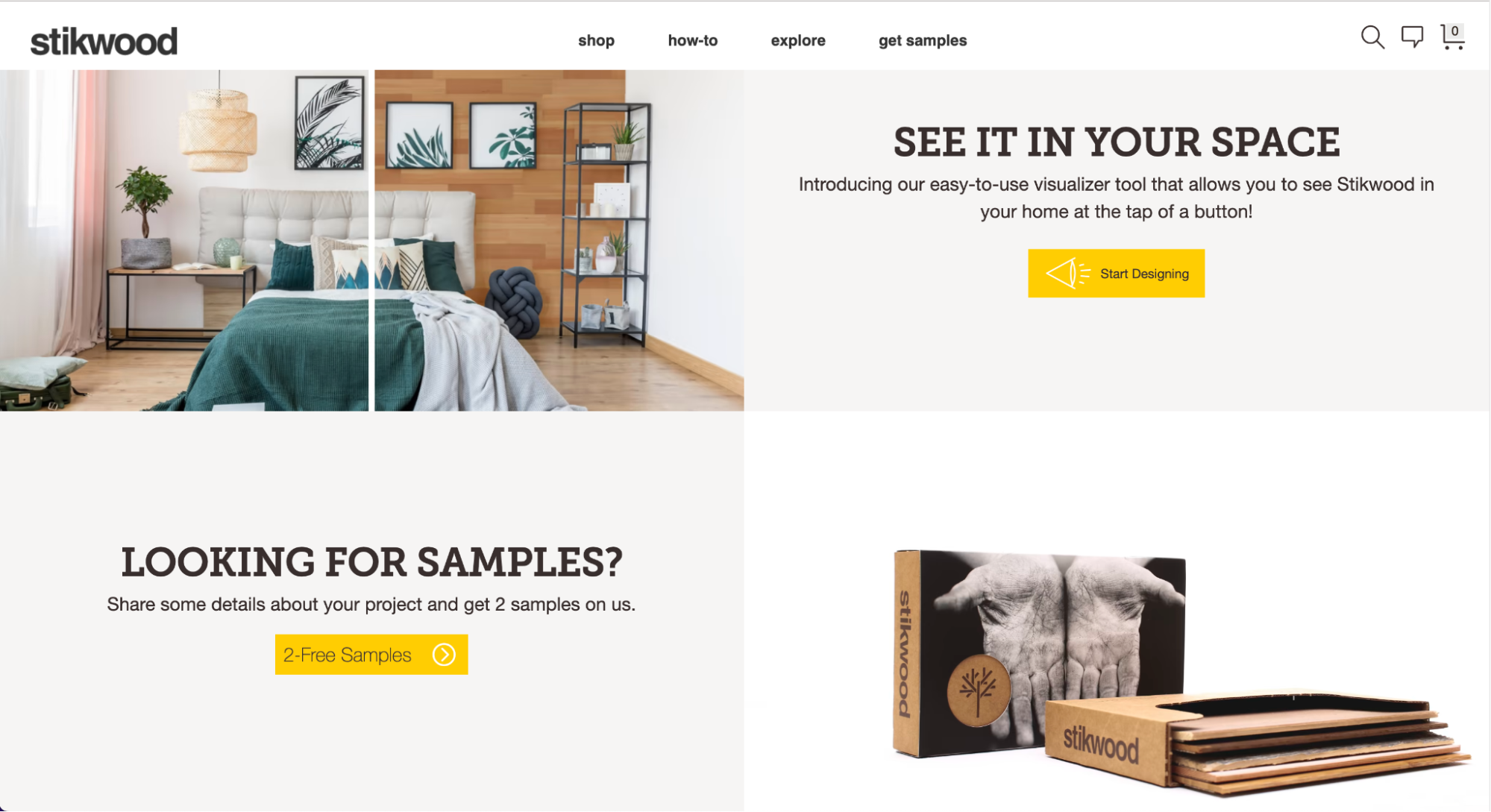
Yoga Girl
An online store community of yoga enthusiasts, Yoga Girl turned to a headless Shopify build to accommodate all aspects of their brand on their site.

#cta-visual-fe#<cta-title>The backend you have—now with a frontend you’ll love<cta-title>See how Shogun Frontend helps you take a radically different approach to headless commerce. Learn more
BigCommerce
Another very established player in the headless ecommerce platform space, BigCommerce is a great option for brands looking to scale their business.
Pros:
- Extensive API coverage – BigCommerce has made 92% of its commerce services available through API requests. They support GraphQL and REST APIs, giving you more flexibility when going headless.
- Better testing and segmentation – BigCommerce’s integrated platform makes testing customer segments a challenge. Making the necessary changes and conducting meaningful A/B tests is much harder to do when the customer-facing part of your store is tied to your backend services. Going headless with BigCommerce, however, means you can do your customer testing and analysis on the frontend.
- Optimize multiple sites – BigCommerce has great multi-site management capabilities, offering you a single view of inventory and stock. By going headless, you can maximize this advantage, creating fast, rich, and consistent content for all your channels and sites.
Cons:
- You’ll need to recreate your analytics – Going headless with BigCommerce means you lose access to their analytics tools. As part of a headless build (Jamstack or a platform approach), you’ll have to re-design and integrate them.
- The checkout form – Even when you go headless, BigCommerce still manages the checkout form. This isn’t necessarily a bad thing, as they look after PCI compliance for you. But it does mean every customer has to fill out a long form when checking out, even those who are repeat customers. However, there are huge fans of BigCommerce checkout functionality who’ll be happy to hear checkout stays as-is.
BigCommerce headless commerce examples:
Black Diamond Equipment
Taking advantage of BigCommerce headless to use a more powerful CMS, this outdoor apparel and equipment brand can now highlight its products within rich customer experiences.
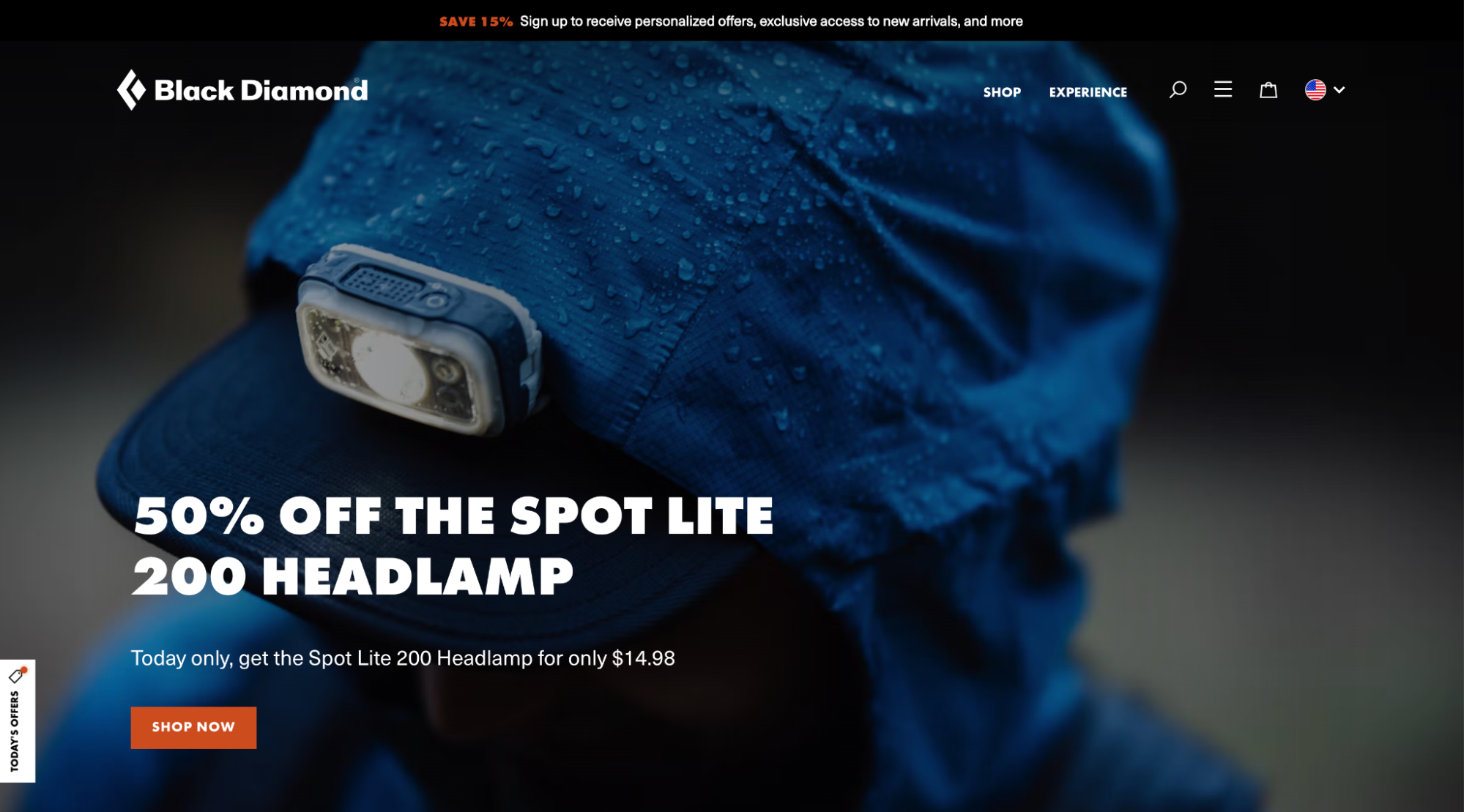
Larq
Like their product, their site is crisp, clean, and clear. This retailer of filtered water products has used headless commerce to create a minimalist yet captivating BigCommerce site. It goes way beyond the standard Bigcommerce theme.
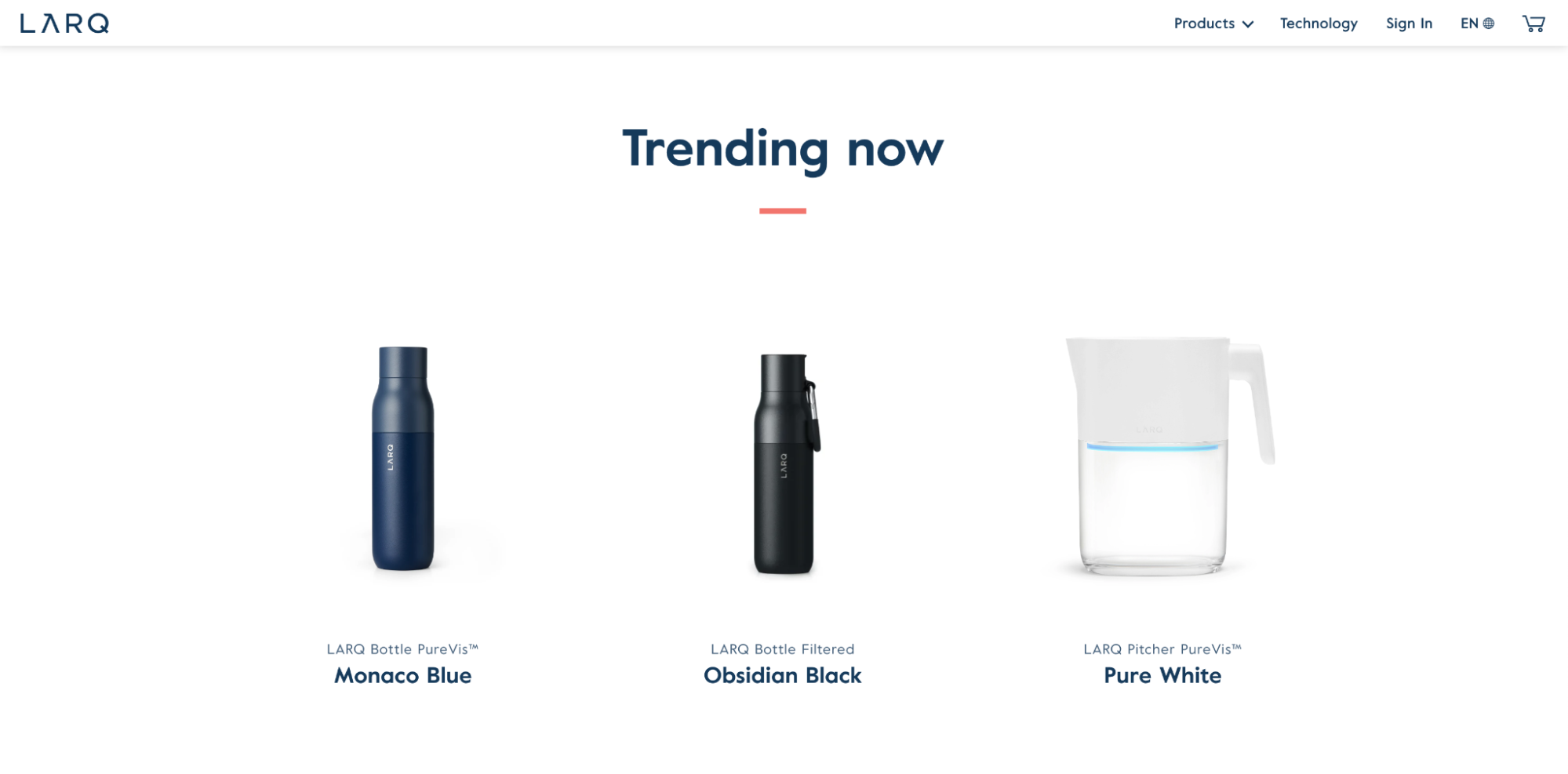
Magento/Adobe Commerce
This enterprise-grade platform provides extensive commerce services.
It’s particularly useful for online stores with large catalogs, as their menu system comes with a wide range of options, making it customizable to your needs and supportive of complex product ranges.
Pros:
- Flexibility – Magento has structured its headless architecture in such a way as to make virtually any type of headless frontend compatible with its backend platform.
- PWA Studio – Adobe has created PWA Studio, a suite of developer tools that allows you to build a frontend powered by a Progressive Web App, which will add even greater speed to your frontend.
Cons:
- Long lead times for a build – Especially if you’re doing a custom build with PWA Studio. You can achieve the same speed and content delivery results with a frontend platform built on PWAs, while eliminating the costly and complex developer reliance.
- Complex management and high costs – If you’re taking care of your own frontend development, you’ll be responsible for ongoing technical management once you’re up and running with a headless Magento site. There is a large pool of Magento developers on hand to help you, but their technical expertise is expensive.
Adobe headless commerce examples:
Made.com
Beautiful, bold images combine with sparse text and have a powerful impact on the visitor on this Adobe Commerce headless site. Made.com have used Magento’s menu flexibility combined with intuitive site navigation to create a unique and striking customer experience.
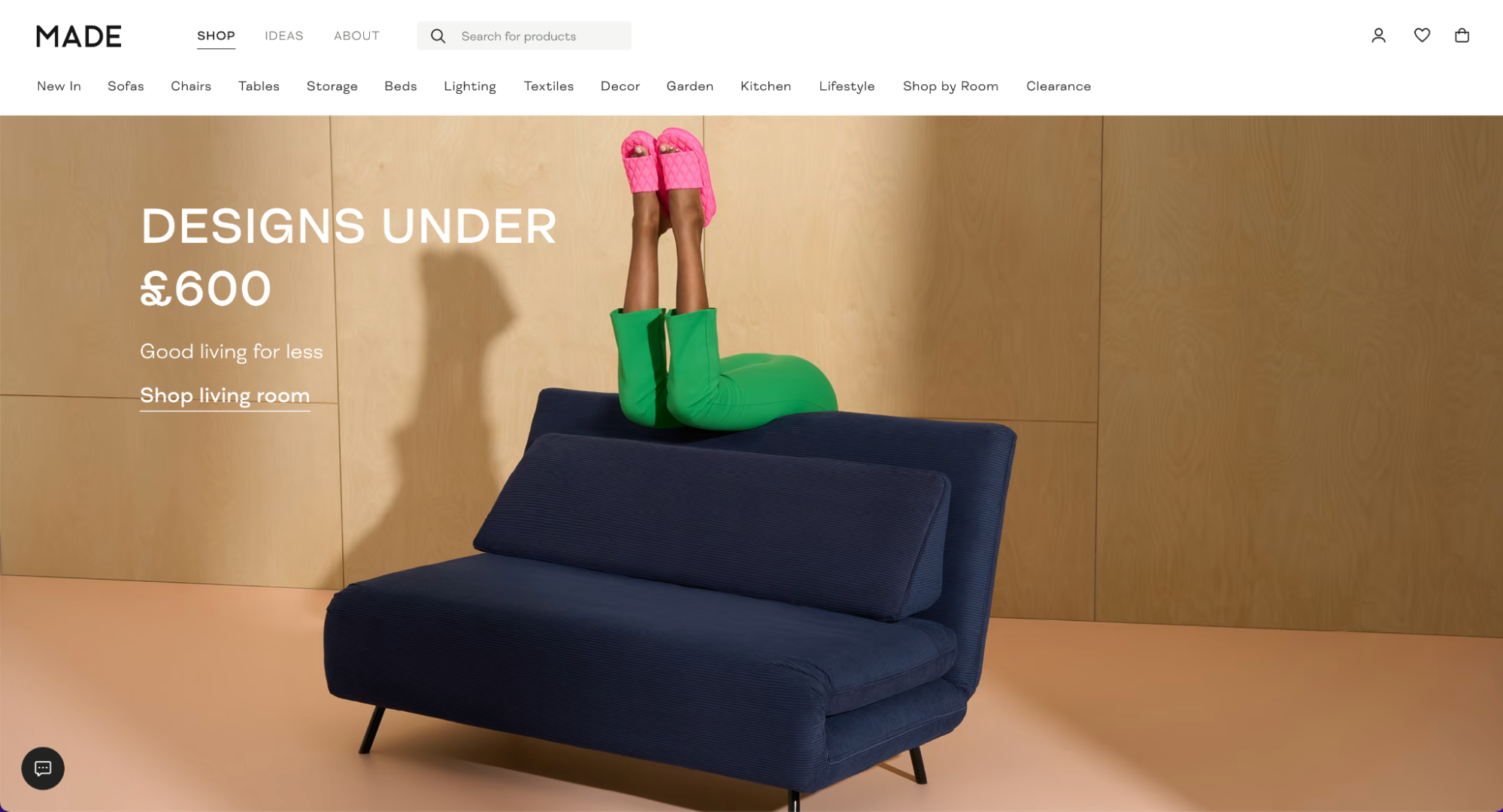
LoveCrafts
Aiming for a more fun and warm aesthetic than some of the other brands on this list, LoveCrafts incorporate a social feed into their homepage and a community section on their site.
All while keeping the content rich and instant, thanks to their headless Magento 2 build.
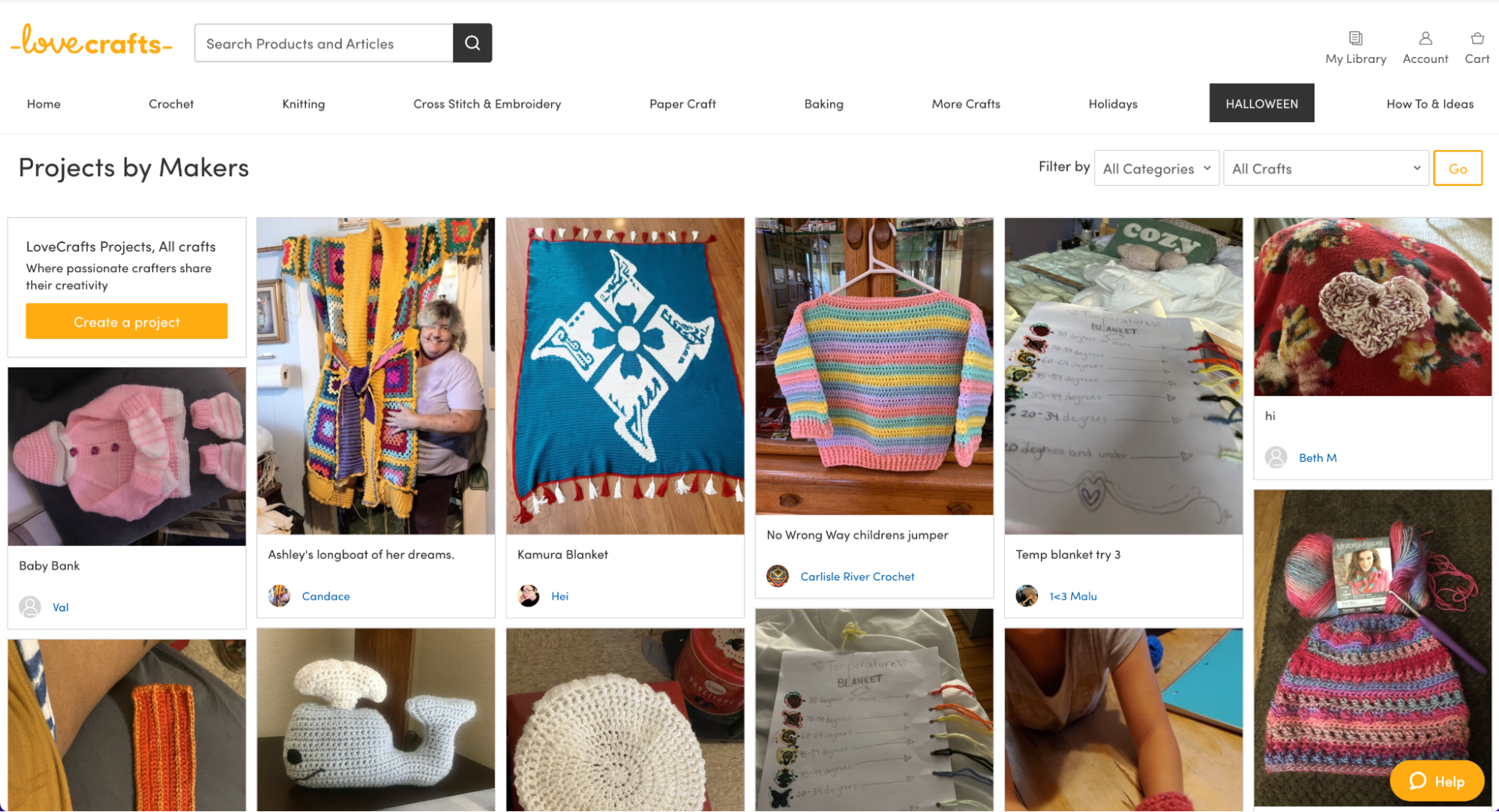
#cta-visual-fe#<cta-title>The backend you have—now with a frontend you’ll love<cta-title>See how Shogun Frontend helps you take a radically different approach to headless commerce. Learn more
Salesforce Commerce Cloud (SFCC)
Formerly known as Demandware before being acquired and rebranded in 2016, SFCC is Salesforce’s answer to headless commerce.
While they are very much an enterprise-level platform, they know not everyone will want to be tied into the higher-priced Salesforce ecosystem.
Pros:
- Customer 360 Salesforce’s premier CRM solution is included in their headless offering – this gives your marketing, business, sales, and technical teams a shared point of reference.
- Best-of-breed commerce services – Salesforce is a market leader in many areas of enterprise software, and with its headless-enabled platform, you can have access to a wealth of commerce services.
Cons:
- Functions best in conjunction with other Salesforce products – While headless means you’re not tied into Salesforce’s other services, all Salesforce software is designed to work as part of a wider web of proprietary tools. Using their backend commerce platform as a standalone will require expert guidance and a terrific implementation partner.
- Cost – This is an enterprise-level ecommerce solution, which is reflected in the pricing structure.
SFCC headless commerce examples:
Adidas
The global clothing brand now prioritizes its online store over its physical shops, and it shows in the work they’ve put into its customer experience.
High-quality images and video create an exciting and energetic site.
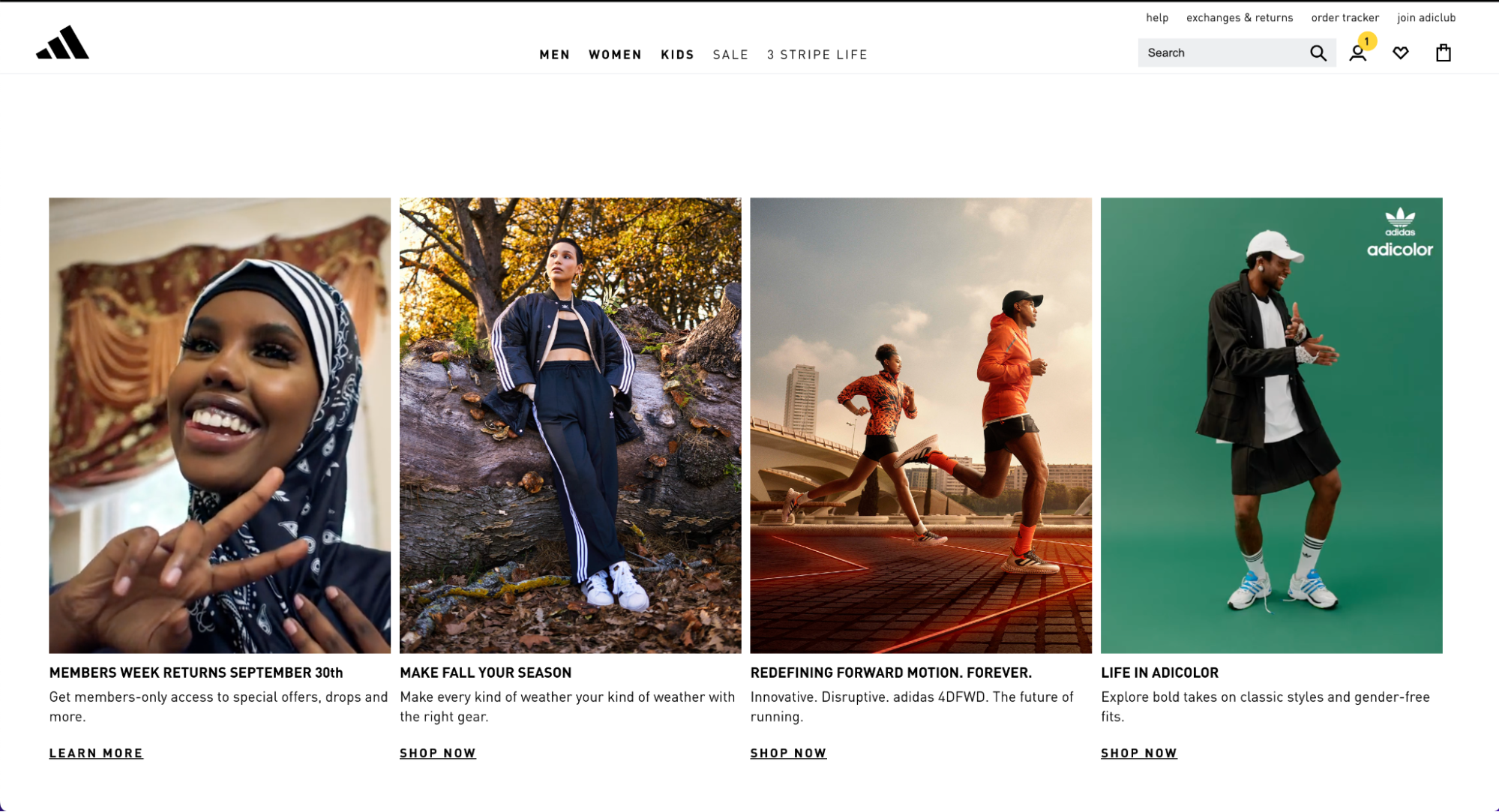
Ralph Lauren
Another global brand powered by Salesforce Commerce Cloud.
They not only use this top headless commerce platform to deliver rich and enticing images and video to site visitors, they also make use of Salesforce’s order processing, CRM, and merchandising capabilities to create a deeply personalized experience.

Elastic Path
Elastic Path is an API-first platform. This newer entrant among the top headless ecommerce platforms has been designed with headless in mind, making it more easily composable than some of its more traditional competitors.
Pros:
- Microservices architecture – Meaning different backend services can be offered on an individual basis. It’s a step up on the original idea of headless commerce, with not only the frontend separated from the backend, but the backend services separated from each other too. This is what makes Elastic Path a composable solution.
- Optimized for omnichannel – Elastic Path’s modular approach means you can craft exactly the omnichannel experience you need. As every brand has a different customer profile and therefore a different customer journey, this is a more efficient way of crafting your omnichannel experience.
Cons:
- Potential for complexity – A composable approach can be great, allowing you to hand-pick the best-of-breed solution for each technology in the frontend stack you’re particular about. But if you’re building out each individual aspect, it can also get unwieldy and require intensive ongoing developer work.
Elastic Path headless commerce examples:
Teilor
This European jewelry brand used Elastic Path to support its high-end, content-rich site.
Product detail is all-important for this online retailer, and so the quality of product images needed to be high, without sacrificing site speed.
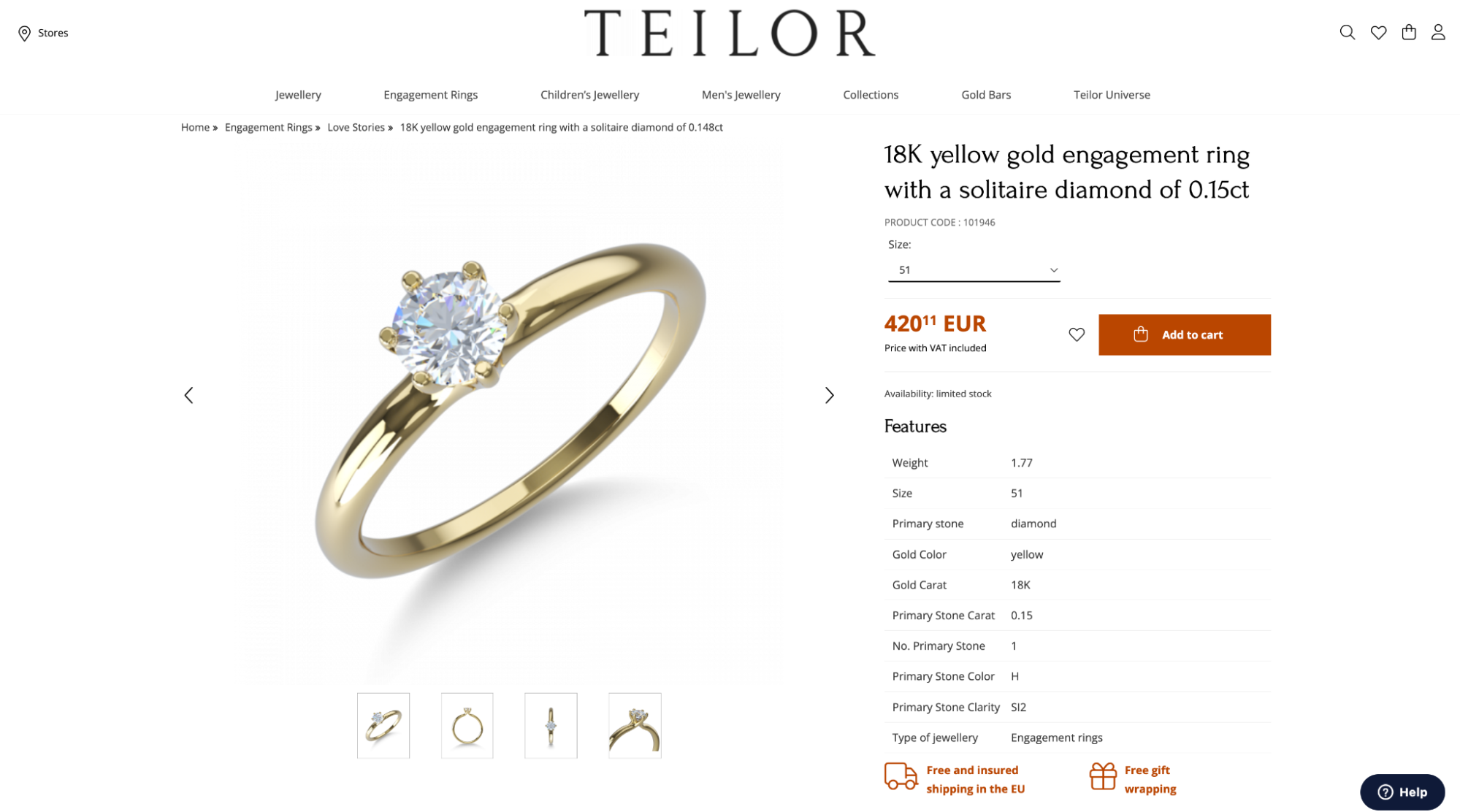
Herschel Supply
This Canadian travel bags and accessories realtor uses sharp, colorful images to strike the perfect balance between business-like and fun.
Their drop-down menu organizes its product range into easily understandable categories.
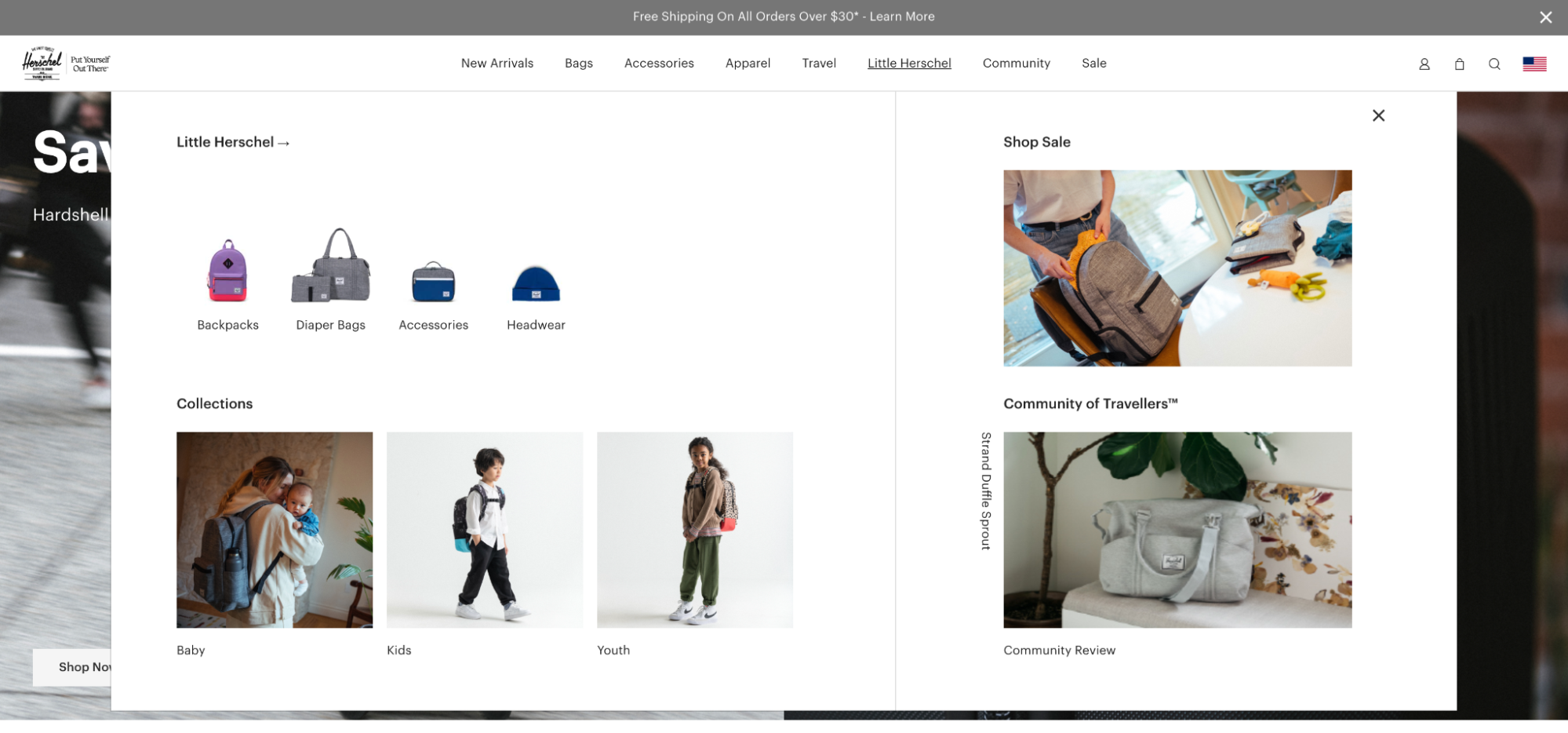
Selecting a frontend platform for once you’re headless
Decoupling your backend platform from its inbuilt frontend gives you unlimited customizability, total control over your storefront design, and more choice in how you create and deliver content for your customers.
And once decoupled, you’ll need ‘the head’ or the frontend layer.
This is where we can help.
Shogun Frontend is a unified frontend platform you can pair with any of the top headless commerce platforms we walked through here to create incredibly fast, performant sites with content-rich customer experiences.
With this path, your brand partners with Shogun for FEaaS (the development of a progressive web application), plus the Shogun Frontend software that includes an experience manager (to control the layout and composition of web content), and the API integrations involved.
This packaged or unified SaaS platform simplifies the path to achieving the benefits of headless architecture, and it’s great for brands who don’t want to take on the overhead of building the infrastructure from scratch.
It eliminates the complexity that potentially comes with decoupling as you don’t need to wrangle together different technologies with multiple APIs.
Shogun Frontend is radically reshaping how brands go headless: You still get the design, speed, and customer experience benefits that come with headless commerce, but now you can focus on differentiating your brand via the memorable shopping experience you craft (not via the technology you assemble together to make it happen).
#cta-visual-fe#<cta-title>The backend you have—now with a frontend you’ll love<cta-title>See how Shogun Frontend helps you take a radically different approach to headless commerce. Learn more

Rhys Williams
Rhys is a writer specializing in enterprise software, ecommerce, and SaaS. He describes himself as a geek and a wordsmith and relishes making complex, technical topics come to life in easy-to-understand web copy.


